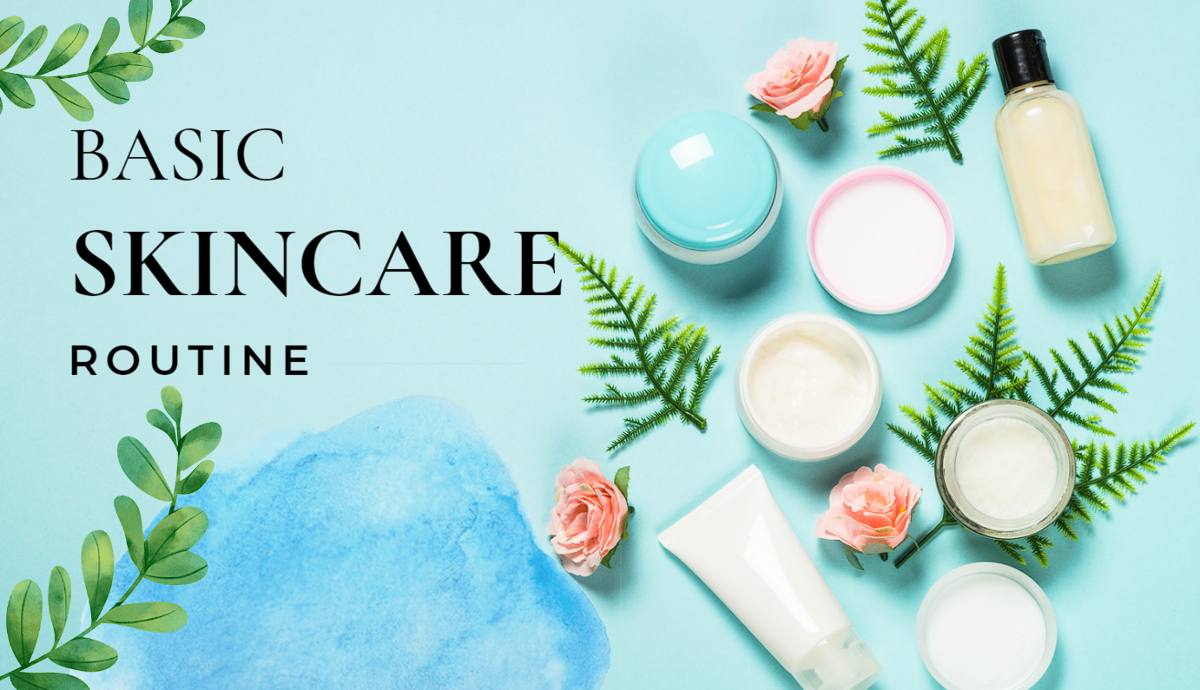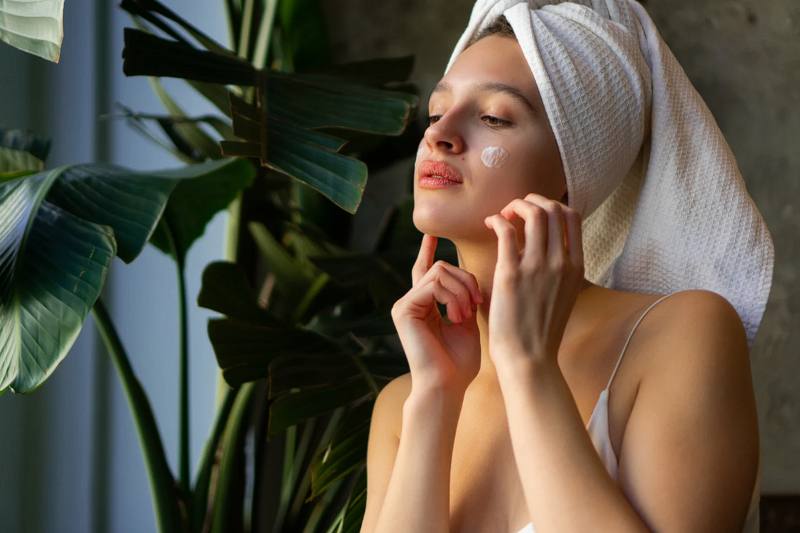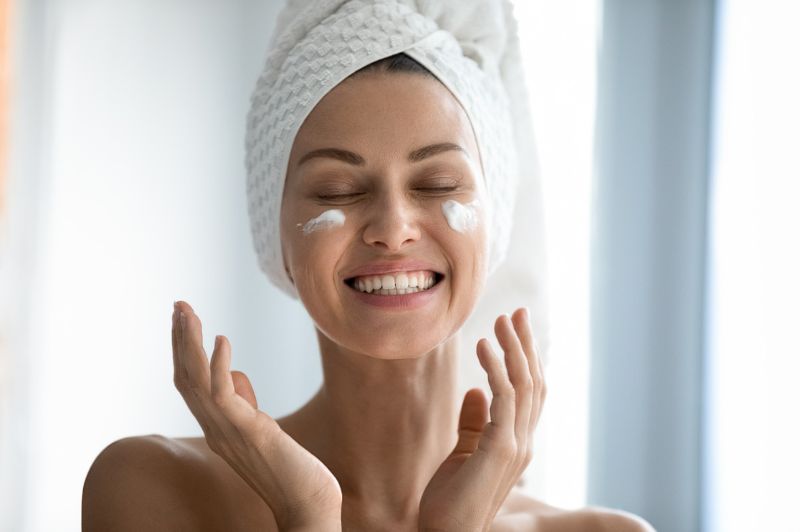Basic Skin Care Routine

Introduction to Basic Skin Care Routine
Basic Skin Care Routine: A well-rounded skin care routine is more than just a daily ritual; it’s essential for maintaining your skin’s health and vitality. Think of it like a consistent workout plan for your body—regular attention and the right techniques lead to lasting benefits. By following a structured routine, you can keep your skin clean, hydrated, and protected from environmental aggressors. But before diving into the steps, it’s crucial to understand your skin type. This knowledge will guide you in choosing the most effective products and techniques tailored specifically for you.
Table of Contents
Morning Skin Care Routine
Cleansing
The foundation of any morning skin care routine is cleansing. Cleansing helps to remove overnight sweat, oils, and any leftover products from your night routine. A cleanser should be chosen based on your skin type and concerns. For oily skin, a foaming or gel-based cleanser is effective at controlling excess oil and preventing breakouts. For dry skin, a creamy or hydrating cleanser will help maintain moisture while cleansing. When applying your cleanser, use lukewarm water and gentle circular motions. This technique ensures that you clean your skin without causing irritation or overstimulation.
Toning
Toning is the next step and is often overlooked, but it plays a critical role in preparing your skin for the next stages of your routine. A toner helps to balance the skin’s pH levels, which can be disrupted by cleansing. It also removes any residual impurities that your cleanser may have missed. When selecting a toner, look for one that matches your skin type. For example, if you have sensitive skin, choose a toner with calming ingredients like chamomile or rose water. Apply the toner with a cotton pad, gently sweeping it across your face and neck. This simple step helps to tighten pores and enhance the absorption of subsequent products. [Basic Skin Care Routine]
Moisturizing
Moisturizing is essential to lock in hydration and keep your skin supple throughout the day. The right moisturizer can make a significant difference in your skin’s texture and overall appearance. If you have oily skin, opt for a lightweight, oil-free moisturizer that provides hydration without clogging pores. On the other hand, those with dry skin should choose a richer, more emollient formula. Apply your moisturizer using upward strokes to stimulate circulation and promote a firming effect. Be sure to cover your entire face and neck, as these areas are often exposed to environmental elements that can lead to dryness.

Sunscreen
Applying sunscreen is the final and arguably the most crucial step in your morning routine. Sunscreen protects your skin from harmful UV rays that can lead to premature aging and increase the risk of skin cancer. Choose a broad-spectrum sunscreen with an SPF of at least 30, which protects against both UVA and UVB rays. Apply it generously to all exposed areas, including your face, neck, and ears. Reapply every two hours if you’re spending extended time outside or if you’re sweating. Incorporating sunscreen into your daily routine ensures long-term protection and helps maintain even skin tone. [Basic Skin Care Routine]
Evening Skin Care Routine
Cleansing
In the evening, cleansing is just as important as in the morning, if not more so. After a day of exposure to environmental pollutants, makeup, and sunscreen, your skin needs a thorough cleanse. Begin with an oil-based cleanser to break down and dissolve makeup and sunscreen. This first step breaks down the impurities, making them easier to wash away. Next, use a water-based cleanser to eliminate any leftover residue and ensure a thorough cleanse. This double-cleansing method ensures that your skin is completely clean and ready for the next steps in your routine.
Exfoliation
Exfoliation is an essential part of the evening routine, but it shouldn’t be done every day. This process helps remove dead skin cells, unclog pores, and encourage the renewal of skin cells. Exfoliants come in two main types: physical and chemical. Physical exfoliants, like scrubs, use granular particles to manually slough off dead skin. However, they can be abrasive if used too often. Chemical exfoliants, such as those containing alpha-hydroxy acids (AHAs) or beta-hydroxy acids (BHAs), dissolve dead skin cells without scrubbing. For most skin types, exfoliating 1-2 times a week is sufficient to keep the skin smooth and clear without causing irritation. [Basic Skin Care Routine]
Treatment Products
Treatment products, like serums and spot treatments, are designed to address specific skin concerns. Serums are concentrated formulations that penetrate deeper into the skin to deliver active ingredients like vitamins, antioxidants, and hyaluronic acid. Choose a serum based on your skin’s needs—hydrating serums for dry skin, anti-aging serums for mature skin, and acne-fighting serums for blemish-prone skin. Spot treatments are targeted solutions for issues like acne or dark spots and should be applied directly to the affected areas. Apply these treatments after cleansing and before moisturizing to maximize their effectiveness.
Moisturizing
Just as in the morning, moisturizing in the evening is crucial for maintaining skin hydration. Night creams are typically richer and contain ingredients that support overnight repair and rejuvenation. Look for ingredients like retinol, peptides, and ceramides, which can help improve skin texture, reduce fine lines, and strengthen the skin barrier. Apply the night cream evenly over your face and neck, using upward motions to enhance blood circulation and promote a firming effect. For an extra boost of hydration, consider incorporating a hydrating mask into your routine once a week. [Basic Skin Care Routine]

Weekly Additions to Your Routine
Face Masks
Face masks offer an additional layer of care and can provide targeted treatment for various skin concerns. They come in different formulations, such as clay masks for oil control, sheet masks for hydration, and peel-off masks for deep cleansing. Apply masks after cleansing and before moisturizing. Depending on your skin’s needs and the type of mask, use them once or twice a week. Masks can help to address specific issues like dryness, dullness, or acne, giving your skin an extra boost of care. [Basic Skin Care Routine]
Skin Care Tools
Incorporating skin care tools into your routine can enhance your results and add a luxurious touch. Tools like jade rollers or gua sha stones can improve blood circulation, reduce puffiness, and enhance product absorption. Jade rollers are used with gentle pressure to promote lymphatic drainage and relaxation. Gua sha tools work similarly, with the added benefit of stimulating collagen production and improving skin elasticity. Use these tools in conjunction with your serums or moisturizers for a spa-like experience at home. [Basic Skin Care Routine]
Tips for Maintaining Healthy Skin
Staying Hydrated
Hydration is key to maintaining healthy, glowing skin. Drinking plenty of water helps to keep your skin cells hydrated from the inside out. Aim for at least eight glasses of water a day, and increase your intake if you’re physically active or live in a dry climate. Proper hydration supports the skin’s natural barrier function and helps to flush out toxins, contributing to a clearer complexion.
Eating a Balanced Diet
Your diet has a significant impact on your skin’s health. A balanced diet, abundant in fruits, vegetables, lean proteins, and healthy fats, delivers essential nutrients that bolster skin health. Foods high in antioxidants, like berries and leafy greens, can help protect your skin from oxidative damage. Omega-3 fatty acids found in fish and nuts can also contribute to a healthy, hydrated complexion. Eating a varied and nutrient-dense diet helps to promote overall skin vitality. [Basic Skin Care Routine]
Getting Enough Sleep
Getting enough sleep is crucial for skin repair and overall well-being. During sleep, your skin goes into repair mode, regenerating cells and boosting collagen production. Strive for 7-9 hours of quality sleep each night to aid your skin’s natural repair processes. Poor sleep can lead to issues like dark circles, dullness, and an increased risk of skin problems. Establish a regular sleep schedule and create a relaxing bedtime routine to improve sleep quality and skin health.

Conclusion
A well-structured skin care routine is your ticket to healthy, radiant skin. By following these detailed steps, you can effectively clean, hydrate, and protect your skin. Remember that consistency is key, and tailoring your routine to your specific skin type and needs will yield the best results. Embrace your routine as a form of self-care and enjoy the benefits of a glowing, healthy complexion. [Basic Skin Care Routine]
FAQs
Q1. How frequently should I update my skin care products?
Changing your skin care products should be done thoughtfully. If you’re not seeing results or if your skin’s needs change—such as with age or seasonal changes—it may be time to try something new. However, frequent changes can disrupt your skin’s balance. Introduce new products gradually and monitor your skin’s response to avoid overloading it with too many changes.
Q2. Can I Use the Same Routine for All Skin Types?
No, skin care routines should be customized based on individual skin types and concerns. For example, a routine that works for oily skin may not be suitable for dry or sensitive skin. Understanding your skin type helps in selecting the most appropriate products and achieving the best results for your specific needs.
Q3. What If I Have Sensitive Skin?
Sensitive skin requires gentle care. Choose products that are labeled as hypoallergenic and free of irritating ingredients like alcohol or synthetic fragrances. Choose soothing ingredients like aloe vera, chamomile, or calendula. Perform a patch test before using new products to ensure they won’t cause irritation.
Q4. Are There Any Skin Care Routines for Aging Skin?
For aging skin, focus on products that address signs of aging such as fine lines, loss of elasticity, and uneven skin tone. Incorporate anti-aging ingredients like retinoids, peptides, and hyaluronic acid into your routine. These ingredients help to boost collagen production, improve skin texture, and maintain hydration, promoting a more youthful appearance.
Q5. How Do I Know If a Product is Working for Me?
Evaluate a product’s effectiveness by observing changes in your skin over a period of 4-6 weeks. Look for improvements in your specific concerns, such as reduced blemishes or increased hydration. If you experience irritation or no visible benefits, the product might not be suitable for your skin. Always consider your skin’s reaction and adjust your routine accordingly.






